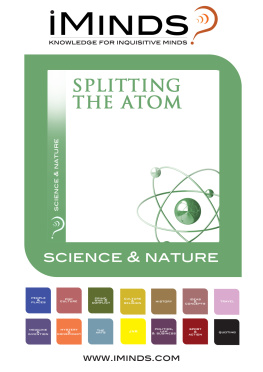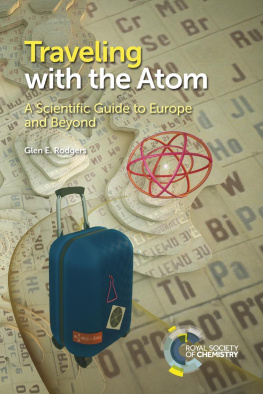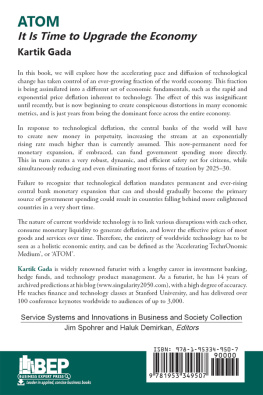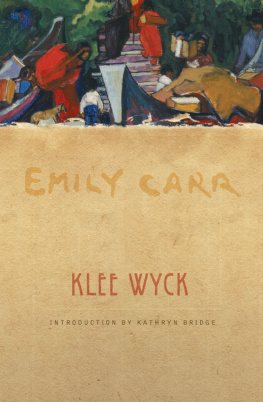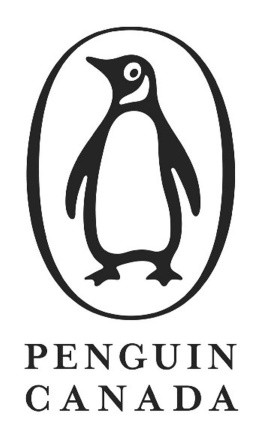Peter C. van Wyck - The Highway of the Atom
Here you can read online Peter C. van Wyck - The Highway of the Atom full text of the book (entire story) in english for free. Download pdf and epub, get meaning, cover and reviews about this ebook. City: Montreal, year: 2010, publisher: McGill-Queen’s University Press, genre: Romance novel. Description of the work, (preface) as well as reviews are available. Best literature library LitArk.com created for fans of good reading and offers a wide selection of genres:
Romance novel
Science fiction
Adventure
Detective
Science
History
Home and family
Prose
Art
Politics
Computer
Non-fiction
Religion
Business
Children
Humor
Choose a favorite category and find really read worthwhile books. Enjoy immersion in the world of imagination, feel the emotions of the characters or learn something new for yourself, make an fascinating discovery.

- Book:The Highway of the Atom
- Author:
- Publisher:McGill-Queen’s University Press
- Genre:
- Year:2010
- City:Montreal
- Rating:4 / 5
- Favourites:Add to favourites
- Your mark:
- 80
- 1
- 2
- 3
- 4
- 5
The Highway of the Atom: summary, description and annotation
We offer to read an annotation, description, summary or preface (depends on what the author of the book "The Highway of the Atom" wrote himself). If you haven't found the necessary information about the book — write in the comments, we will try to find it.
The Highway of the Atom — read online for free the complete book (whole text) full work
Below is the text of the book, divided by pages. System saving the place of the last page read, allows you to conveniently read the book "The Highway of the Atom" online for free, without having to search again every time where you left off. Put a bookmark, and you can go to the page where you finished reading at any time.
Font size:
Interval:
Bookmark:
THE HIGHWAY OF THE ATOM

Peter C. van Wyck

McGill-Queens University Press 2010
ISBN 978-0-7735-3783-5
Legal deposit fourth quarter 2010
Bibliothque nationale du Qubec
Printed in Canada on acid-free paper that is 100% ancient forest free
(100% post-consumer recycled), processed chlorine free.
This book has been published with the help of a grant from the Canadian Federation for the Humanities and Social Sciences, through the Aid to Scholarly Publications Program, using funds provided by the Social Sciences and Humanities Research Council of Canada.
McGill-Queens University Press acknowledges the support of the Canada Council for the Arts for our publishing program. We also acknowledge the financial support of the Government of Canada through the Book Fund for our publishing activities.
Library and Archives Canada Cataloguing in Publication
van Wyck, Peter C.
The highway of the atom / Peter C. van Wyck.
Includes bibliographical references and index.
ISBN 978-0-7735-3783-5
1. Uranium mines and miningNorthwest TerritoriesPort RadiumHistory. 2. Atomic bombHistory. 3. Chipewyan IndiansNorthwest TerritoriesGreat Bear Lake Region--Social conditions. 4. Nuclear industryCanadaHistory. I. Title.
QE390.2.U7V35 2010 553.4932097193 C2010-903969-6
This book was designed and typeset by studio oneonone in Sabon 10.2/13.6
For Angela June Mato & Bella
I first began to research and write about the Highway of the Atom in 2001, and over the years I have found myself in discussions with more people than I can name. The gifts of friendship and talk outstrip my ability to remember them all. But I will try. I express my gratitude foremost to the Community of Dline on Great Bear Lake. On each occasion of my visits there my questions were treated with patience and respect; I was shown enormous hospitality. I am grateful for the time I was able to spend there, for what I was shown, and for the stories I was told. In particular, I wish to thank Chief Raymond Tutcho and all the elders and community members who agreed to speak with me; the Dline Uranium Team; Morris Modeste for his help crossing the lake; and Ken and Vera Caine for their hospitality and the use of their couch. To Deborah Simmons, whose interest in this work resulted in my invitation to Dline to begin with, I will always be grateful.
I would also like to thank the staff, archivists and curators at the nwt Archives at the Prince of Wales Northern Heritage Centre in Yellowknife; the Norman Wells Historical Centre; the Northern Life Museum in Fort Smith; the Art Gallery of Greater Victoria; Library and Archives Canada; the Archives of Ontario; Jim White and The Northern Miner magazine archives in Toronto; the Canadian Mining and Energy Corporation (cameco), for access to their archival materials in Port Hope; the Bradbury Science Museum in Los Alamos; the National Museum of Nuclear Science & History (formerly the National Atomic Museum) in Albuquerque; White Sands Missile Range Museum; the Atomic Testing Museum and the Nevada Test Site Historical Foundation in Las Vegas; the Yucca Mountain Information Centers in Las Vegas and Beaty, Nevada; and the Greenland National Museum and Archives.
To Julie Salverson of Queens University I owe much. Without the friendship that developed between us, this work would be quite different. Her uncanny grasp of the poetics and significance of objects, and her unnerving ability to ask the right question at precisely the correct moment these things are registered in this text.
As to all the other others, the incomplete list must include the ongoing support and friendship of Jonathan Bordo, whose work has long enriched my thinking and scholarship; Sherrill Grace, for her work on the North and her interest in mine; Rae Staseson, for her support and all those melancholic sunflowers; Charles Acland, Martin Allor, Matt Soar, Kim Sawchuk, Andra McCartney, Maurice Charland, William Buxton, and all my colleagues and graduate students in the Department of Communication Studies at Concordia University for providing a convivial and stimulating environment; Peter Blow for Village of Widows and more; Marie Clements for talking to me about her play Burning Vision; Peter Goin for letting me use Earth Angel; Jody Berland for her questions; Sandra Gabriele for her archivophilia, and Joel McKim for his skilled research assistance; Douglas Stilton Cohen and Michael Keene, of course; the ever-supportive Jonathan Crago at McGill-Queens University Press; Heather McDougall, for her last-minute proofreading skills; and Scott Zeman for showing us the Trinity site and the oryx. Glenn Macdonalds Northern maps remain, for now, virtual. Rob Van Wyck was fearless and intrepid. Naomi Pauls of Paper Trail Publishing created the index.
Portions of this book were delivered as papers and lectures at the Portland Center for Cultural Studies; Emory University; the University of Western Ontario; Universit Laval; the Royal Society of Canada; Trent University; the Munk Centre, University of Toronto; York University; Ilisimatusarfik (the University of Greenland); the University of Saskatoon; and Queens University at Kingston. I am grateful to my hosts and interlocutors for their criticisms and insights.
This work has twice benefited from the support of the Social Science and Humanities Research Council of Canada. A one-year Visiting Fellowship at the Concordia University Centre for Interdisciplinary Studies in Society and Culture provided me with space and time. Concordia Universitys Faculty of Arts and Science provided a last-minute sshrc Institutional Grant toward the publication this book.
Portions of this text have appeared in Topia: Canadian Journal of Cultural Studies and the Canadian Journal of Communication. Thanks to Howard White of Harbour Publishing for permission to use the Al Purdy poem from Beyond Remembering: The Collected Poems of Al Purdy, Harbour Publishing, 2000.
Angela, although named last, was there from the start. And always.
Field Note: Great Bear Lake 30 July 2003
To start a story at the beginning is of course not an odd thing. Not really. As though one had a choice to begin elsewhere. As though a later object could somehow reach back and make ones having begun into other than what it was, into something else. Beginnings are like that.
So to sit here now on a windswept glacial beach at the tip of Grizzly Bear Mountain peninsula and write the beginning of this, lets say, story, in no way poses itself as an historical proposition. This is not my business. Rather, what it may be is an example of how it is that history itself reaches forward to organize the present. This seems more agreeable to me. The now, as Walter Benjamin might put it (meaning, of course, the now as the actual site of history). This, we may add, is the secret complicity between the past and the present.
Yesterday this all began with a trail of tears, with Indians and potatoes, and Irish famine activists. Another route. Another mourning. Today, however, today is different. Today it begins on another lake. A proper name. Great Bear Lake. Yesterday I was reminded of what I knew four years ago. And what I knew then was that the Highway of the Atom was a story about ethical theory. It was a story about the aporias of responsibility. It was a story, foremost, about the infinite character of responsibility. I still know this to be true, but today I am in a different place. I am on the lake. By which I mean of course Great Bear Lake. Mile zero of the Highway of the Atom, where the wind blows with a fierce intensity, falling down the ancient hills, pouring onto the lake to lift the waters surface into waves.
Next pageFont size:
Interval:
Bookmark:
Similar books «The Highway of the Atom»
Look at similar books to The Highway of the Atom. We have selected literature similar in name and meaning in the hope of providing readers with more options to find new, interesting, not yet read works.
Discussion, reviews of the book The Highway of the Atom and just readers' own opinions. Leave your comments, write what you think about the work, its meaning or the main characters. Specify what exactly you liked and what you didn't like, and why you think so.


